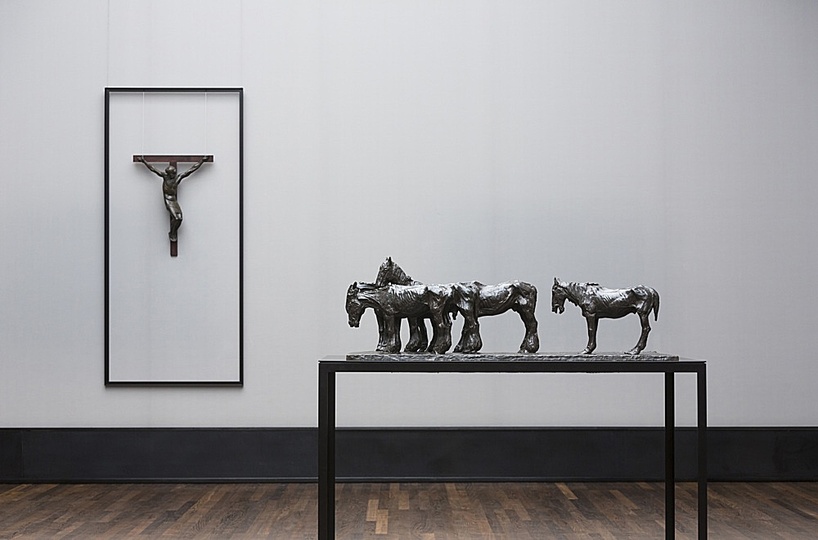Rembrandt Bugatti
Founder: Art Courier
Canins Franz
Rembrant Bugatti (1884-1916), son of furniture designer Carlo Bugatti and brother of automotive designer Ettore Bugatti, was one of the most remarkable and artistically independent sculptors of the early 20th century. During his short life, Rembrandt produced more than 300 objects of art. Although still not widely known to the public, sculptures of Rembrandt Bugatti are among the most coveted items by collectors around the world. From March 28th to July 27th, 2014 the Alte Nationalgalerie Berlin is presenting a broad retrospective solo show of this sculptor of the exotic. Images courtesy: Alte Nationalgalerie Berlin.
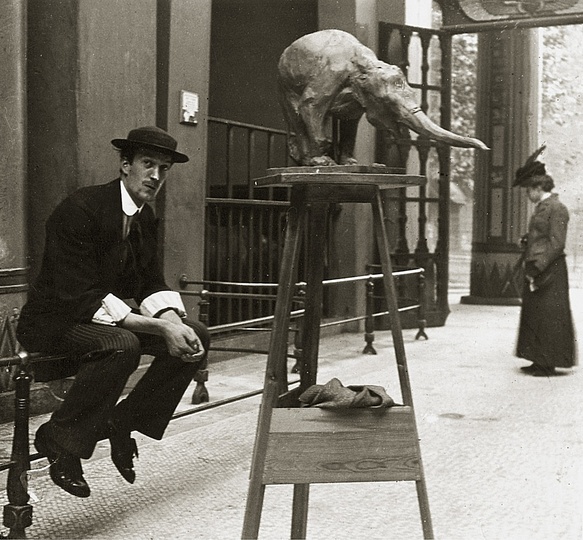
Born in Milan as son of the furniture designer Carlo Bugatti, his talent was discovered and fostered from early on. Rembrandt Bugatti at Antwerp Zoo, circa 1908. Photo: Rembrandt Bugatti Conservatoire.
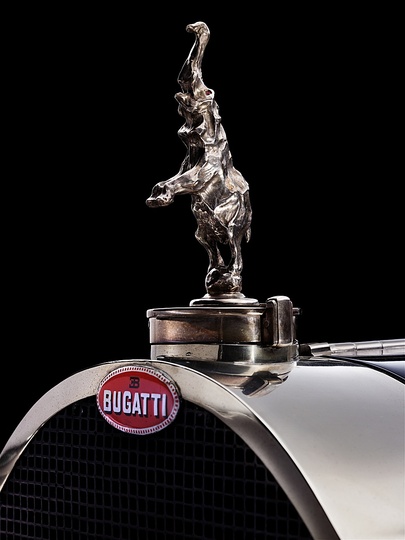
Ettore Bugatti, the legendary designer of the Bugatti motorcars, was Rembrandt's brother. Rembrandt Bugatti, Hood ornament for Bugatti Royale, 1926. Photo: Bernhard Angerer.
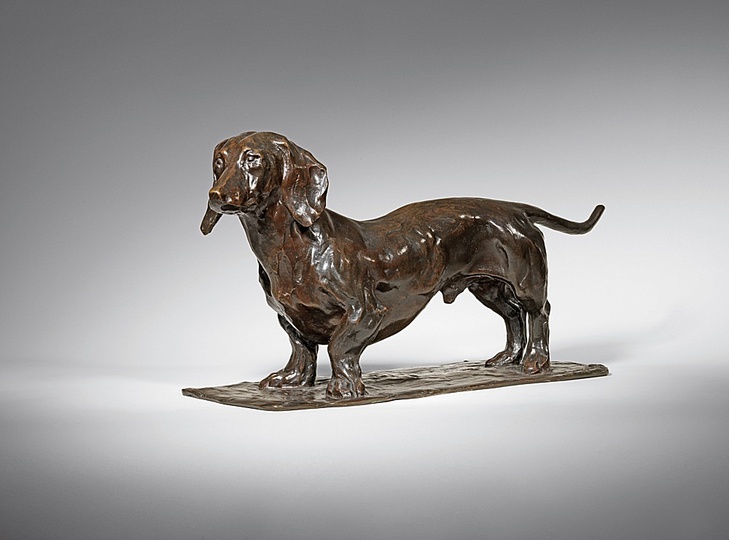
As a young man Rembrandt Bugatti had already found the subject of his life's work - the animal. Rembrandt Bugatti, „Mon chien Wurst“, circa 1905, Bronze, 26 x 53 x 17 cm. Private Collection. Photo: Ken Adlard.
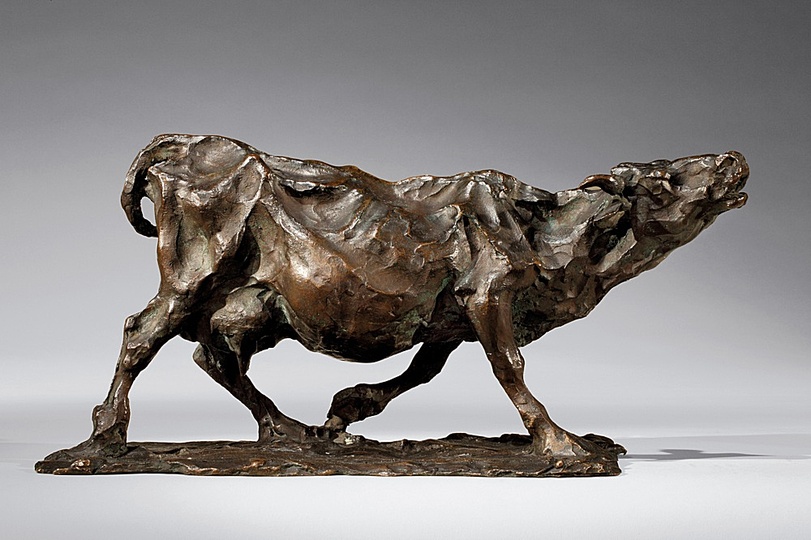
While at first predominantly depicting cattle, he later found more exotic models in the zoological gardens in Paris and Antwerp. Rembrandt Bugatti, Howling Cow (Vache meuglant), 1901, Bronze, 20 x 40 x 17 cm. Private Collection, London. Photo: Peter John Gates
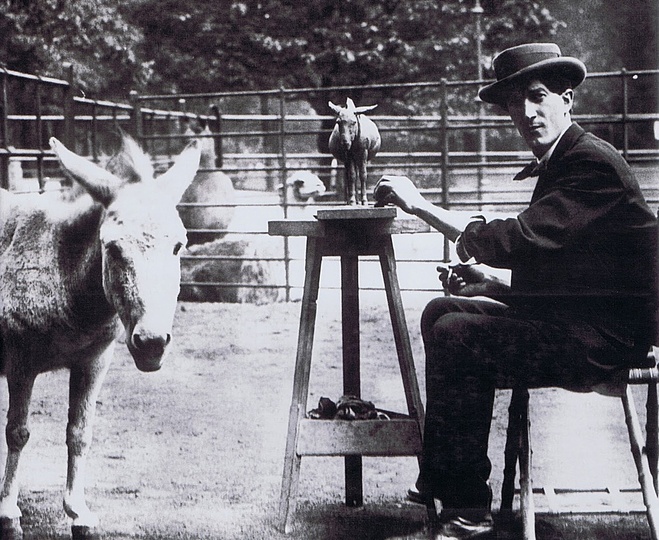
Following a phase of intensive observation, he modeled almost all his sculptures directly in front of the animal itself. Bugatti's extraordinary sense for the “right moment” enabled him to capture the essence of the animal's being in a sculpture and thus create incredibly realistic portraits of individual animals. He was always trying to achieve an accurate record of the characteristics, the movements and sensations of his model. Rembrandt Bugatti with his model at Antwerp Zoo. Photo: Rembrandt Bugatti Conservatoire.
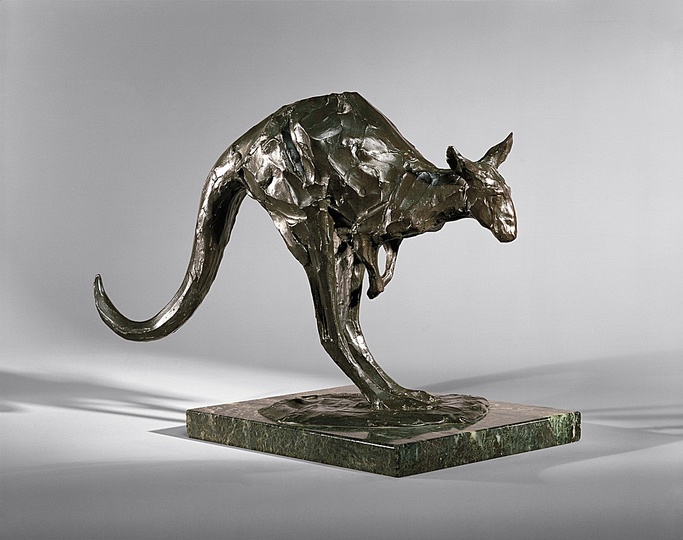
With Bugatti, animals such as anteaters, tapirs, marabous as well as yaks, secretary-birds and kangaroos are introduced as subjects for sculpture for the first time in the European history of art. Rembrandt Bugatti, Jumping Kangaroo (Kangourou bondissant), 1907, Bronze, 34 x 51 x 30 cm. Private Collection. Photo: Peter John Gates
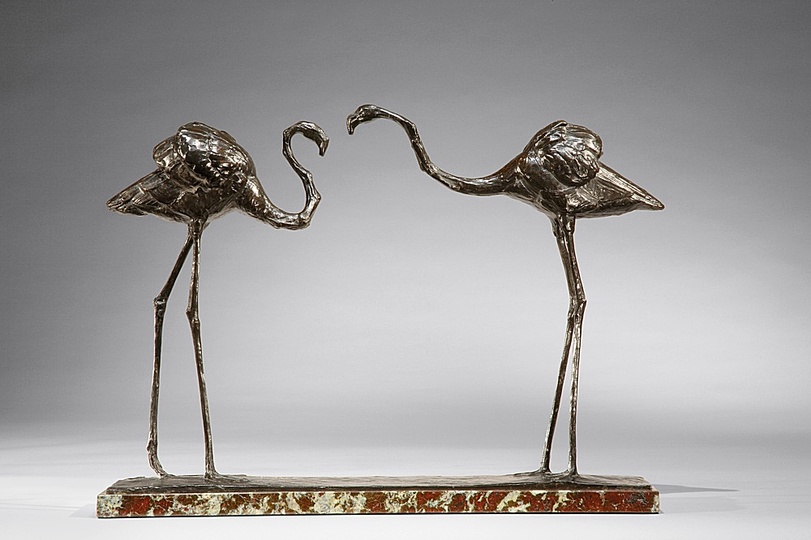
Thanks to his collaboration with the bronze caster Adrien-Aurélien Hébrard, excellent bronze casts of his works became part of many collections. Rembrandt Bugatti, Two Flamingos (Groupe de deux flamants), circa 1912, Bronze, 38 x 49 x 13 cm. Private Collection. Photo: Peter John Gates.
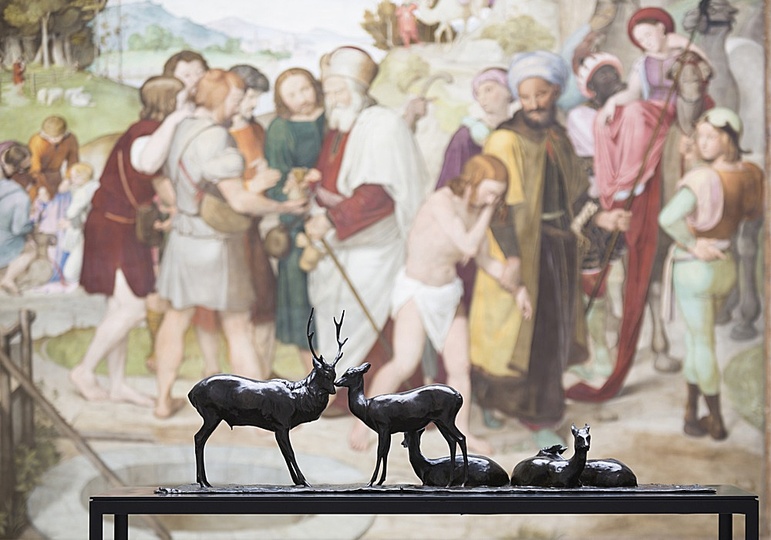
Exhibition view of "Rembrandt Bugatti" at the Alten Nationalgalerie. Chinese Stag and his Four Does (Cerf chinois et ses quatre biches), circa 1906. Bronze, 42 x 130 x 29 cm). Photo: David von Becker.
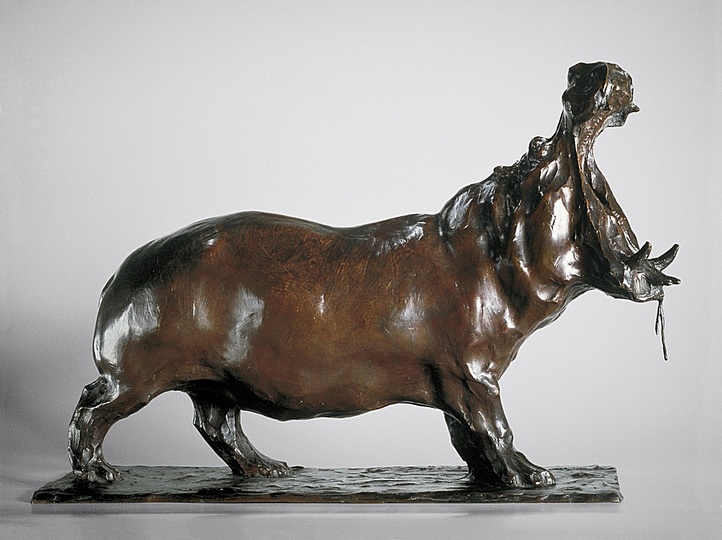
Rembrandt Bugatti, Yawning Hippopotamus (Hippopotame baillant), 1905, Bronze, 36,5 x 55 x 18 cm. Private Collection. Photo: private.
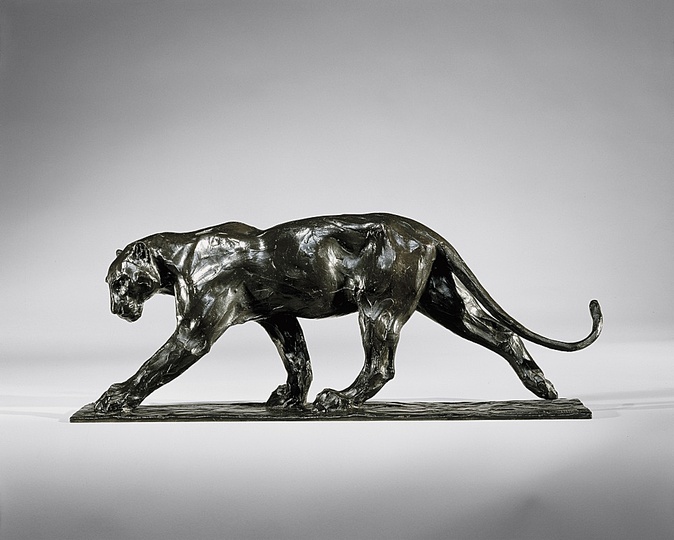
Rembrandt Bugatti, Laufender Panther (Panthère marchant), circa 1904, Bronze, 21 x 53 x 12 cm. Private Collection. Photo: Peter John Gates.
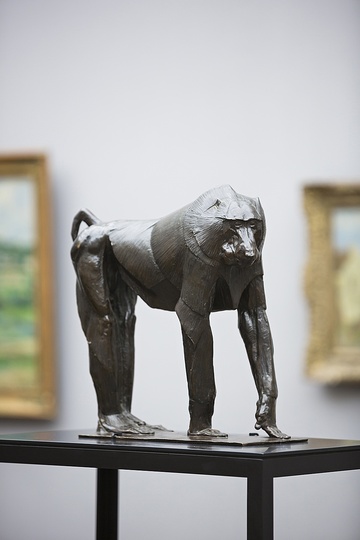
Exhibition view of "Rembrandt Bugatti" at the Alte Nationalgalerie. Sacred Baboon (Babouin sacré "hama-dryas"), circa 1909/10. Bronze, 43,5 x 37 x 17,5 cm. Photo: David von Becker.
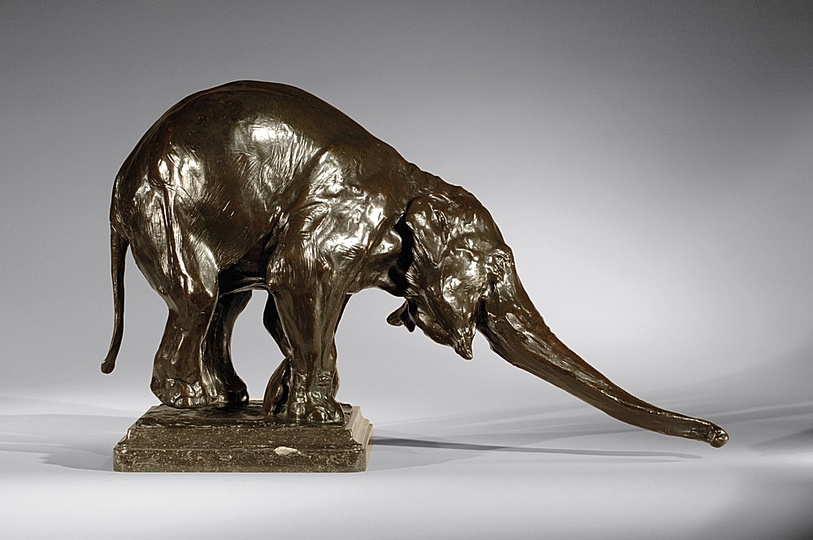
Rembrandt Bugatti, Asian Elefant (»er wird es schaffen«), große Fassung (Éléphant d’Asie »il y arrivera«, le grand modèle), 1907, Bronze 44 x 78 x 27 cm. David und Marie Cooper. Photo: Peter John Gates.
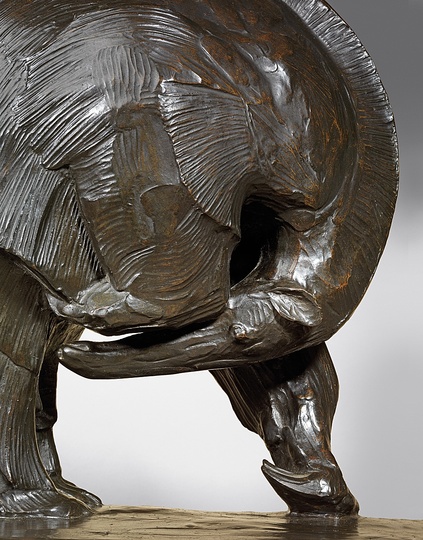
Rembrandt Bugatti, Giant Anteater (Le grand fourmilier), Detail, 1909, Bronze, 36 x 41 x 21,5 cm. Private Collection. Photo: private.
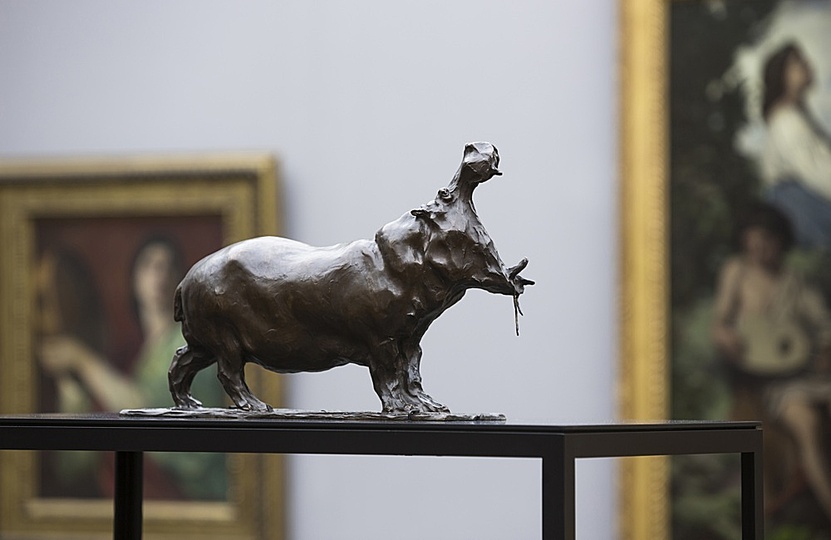
Exhibition view of "Rembrandt Bugatti" at the Alte Nationalgalerie. Rembrandt Bugatti, Yawning Hippopotamus (Hippopotame baillant), 1905, Bronze, 36,5 x 55 x 18 cm. Private Collection. Photo: David von Becker
